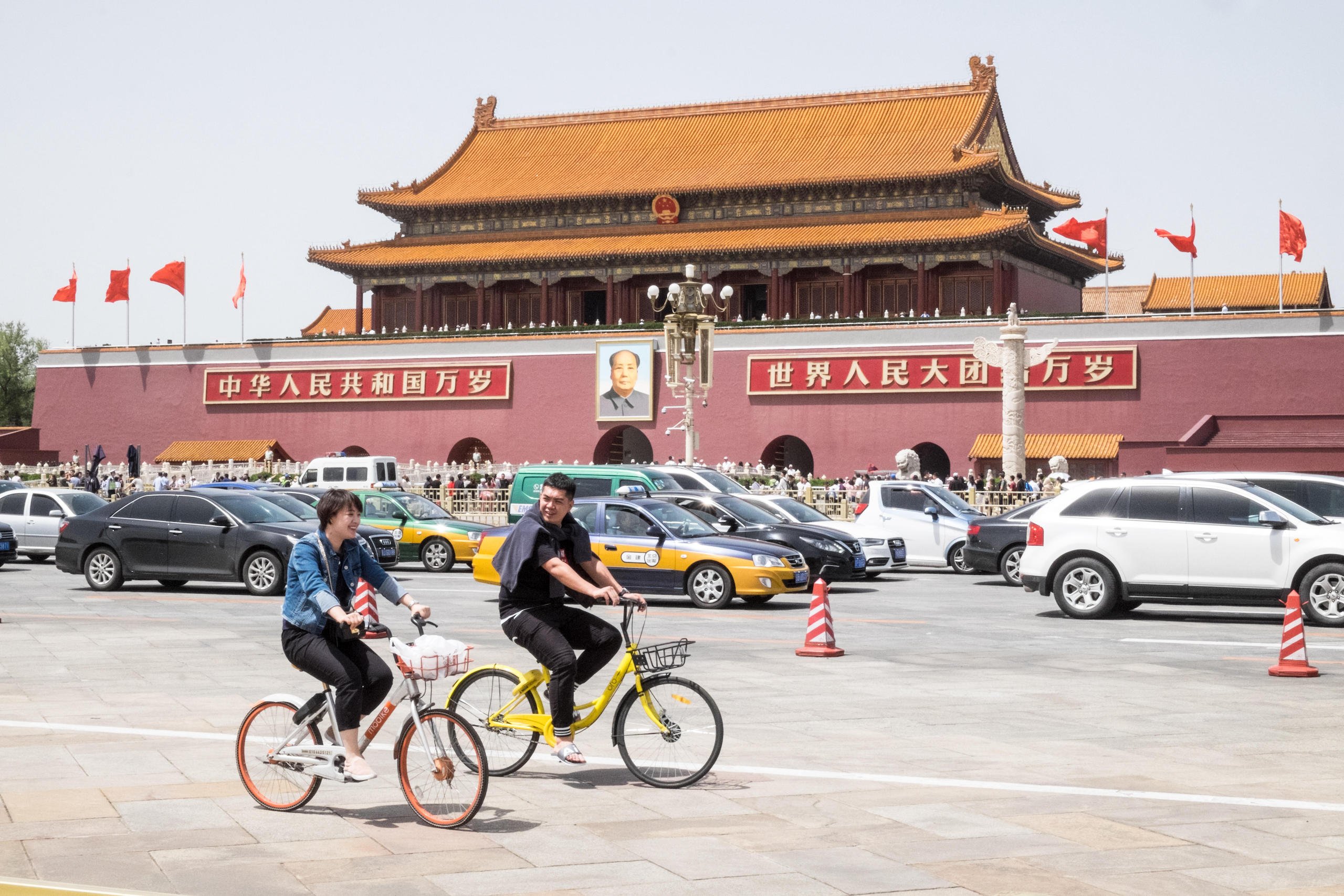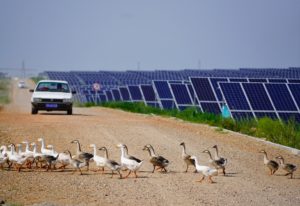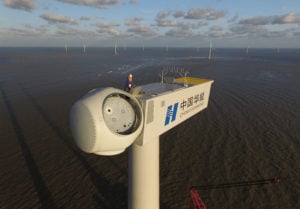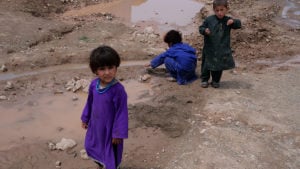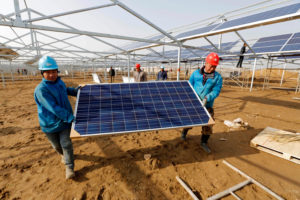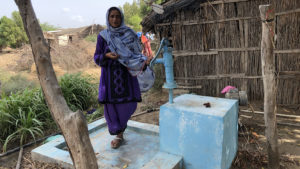There has been a flurry of climate diplomacy since April, with China holding high-level talks with Germany, France, the US, and the three other members of the BASIC bloc (Brazil, South Africa and India). At the US-organised Leaders’ Summit on Climate, President Xi Jinping committed to clamping down on coal. Once again, China’s climate actions and climate governance system were put under the global spotlight.
In her recent book, Wang Binbin, associate researcher at Tsinghua University’s Institute of Climate Change and Sustainable Development, reviewed how stakeholders participated in China’s climate governance from the Copenhagen climate talks of 2009, to the Paris Agreement in 2015, and beyond. China’s Transition on Climate Change Communication and Governance: From Zero to Hero outlines for an international readership how the country’s climate actions were transformed by multi-stakeholder interactions.
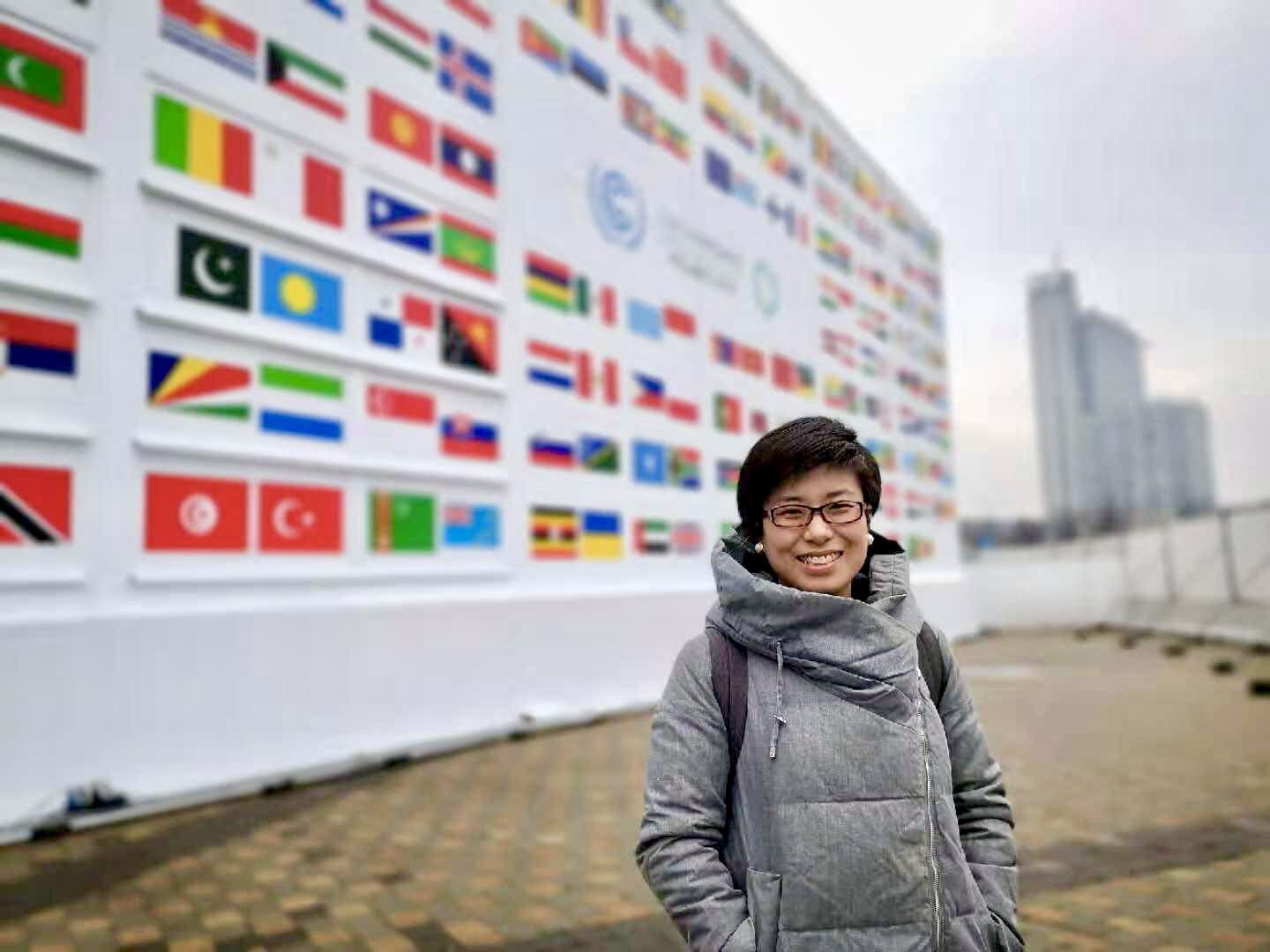
Originally a reporter, Wang Binbin also worked for Oxfam for eight years, where she focused on climate justice and adaptation, low-carbon transitions and green finance. Since 2009 she has been following the UN climate change talks, witnessing how China’s government, media and NGOs have gone from passive observers on the sidelines, to active and central players. In this interview with China Dialogue, Wang points out that a “government-led social governance” model is taking shape in China, and how the country is playing more of a leading role internationally.
The interview has been lightly edited for clarity.
China Dialogue: Your book uses the “two-level game” framework to explain climate governance in China. Could you describe that?
Wang Binbin: It’s a model of international relations in which policymakers have to play chess at both the international and domestic level, trying to balance the needs of both. When trying to understand a country‘s role in global climate governance, we need to look at both aspects, and who the players are, to find optimal solutions.
While the two-level game is often regarded as being played between governments, in reality the participants are more diverse. I identify three major stakeholders in international climate talks and domestic climate: governments, the media and NGOs. Then I look at how the roles and influence of these players have changed to drive overall climate governance in China.
NGOs, central government and local government all have different understandings and levels of awareness of climate governance. Also, the timescale we choose to look at should be representative, and combinable with other factors to provide explanations. The six years from Copenhagen [COP15] to Paris [COP21] saw China’s role transform rapidly. By the end of that stretch [2009–2015], China had taken a much more prominent role in global climate governance.
I also carried out research into new stakeholders, including businesses and the public, and their roles post-Paris Agreement, looking at how these new actors related to others. So, I tried to make the two-level game three-dimensional, looking at how different actors participated at different points in time. The same framework could be used for analysing other governance topics.
How would you explain climate governance in China in terms of the two-level game?
The book shows how stakeholders in China’s climate governance have formed and developed. In the past, international society had only an intermittent, fragmentary understanding of China’s climate governance. For example, it was believed that the central government had overwhelming influence. But in fact, the government consists of central government and various levels of local government. The central government has proposed carbon neutrality and is taking climate change seriously. But if local governments don’t make changes, and if they continue to focus and be evaluated on economic growth, implementation of climate policies will suffer.
If local governments continue to focus and be evaluated on economic growth, implementation of climate policies will suffer
Over time, businesses and NGOs became more involved, making governance more diverse. Central government had to consider how to win and mobilise support from these sectors. These are new angles for international readers; they can learn how China thought and acted on climate issues during that period. It will also help readers cooperate with the various stakeholders at all levels of climate governance in China.
Chinese readers will have heard President Xi’s call for carbon neutrality, but local government and the ordinary people regard that as a very distant undertaking, an international commitment, and they don’t understand how closely that links up with the domestic. So from that declaration in September 2020, to the heating up of carbon neutrality discussions over the last half-year, we’ve seen a two-game process of balancing and consensus-forming. China has been taking a more active and prominent role in international affairs, but also stressing that it must consider both international and domestic matters. That is a two-level game process.
What key advances have we seen in China’s climate governance and communications since 2009?
Overall, the Chinese government lacked experience in these fields prior to 2009. Before Copenhagen, there were still disagreements within the government over climate change, no awareness of how to work with NGOs, and there were no specialist climate reporters. During the Copenhagen talks, the Chinese delegation’s communications work was limited to making announcements at press conferences. There was only limited dialogue. Meanwhile, Chinese reporting took its lead from the delegation and was aimed at a Chinese audience, which meant it couldn’t help push the negotiations forward or help tell China’s side of the story to the international community. The Copenhagen talks failed to reach an agreement and there was widespread disappointment. Afterwards, the UK’s climate secretary Ed Miliband accused China and other countries of “hijacking” the talks. The delegation and media failed to respond promptly, leading to public opinion problems. The overlooking of the importance of international NGOs and the failure to make use of the media left China on the back foot.
From the 2010 Cancun climate change conference onwards, Xie Zhenhua, head of the Chinese delegation at the time, would meet with representatives of international organisations and NGOs both before and during the talks, to explain the Chinese stance. From 2011, the delegation has had a “China pavilion” at the talks, holding forums, seminars and exhibitions open to all, with stakeholders including NGOs and businesses invited to participate. The Chinese media also started working to increase fairness in the talks, and long-term coverage of climate negotiations got underway, making climate reporting richer and more varied. At the governance level, after Copenhagen the Chinese government gradually elevated climate change policy to the level of a national strategy, committed to low-carbon development, bolstered cooperation with NGOs and the media, and shifted from “vertical governance” to “coordinated governance”.
These changes are giving China more influence in global climate governance and putting a “government-led, multi-stakeholder governance” model into practice.

The research in your book runs up to 2018. What new changes have there been at home and abroad since then, and in particular since China announced its carbon neutrality target?
We’ve seen “bottom-up” forces become stronger, with NGOs and businesses becoming more active.
Despite America’s withdrawal from the Paris Agreement during the Trump administration, US state governments such as California have been actively responding to climate change. During the last couple of years, businesses begun to realise that they have to act to survive and grow. BP is developing low-carbon businesses and is no longer a simple oil firm. China’s firms are doing the same. I met a female entrepreneur from Sichuan whose family was in the mining business. Their mines were closed due to environmental inspections and policy changes, and they’ve shifted to green and low-carbon sectors. This highlights that for businesses, responding to climate change isn’t just about political and social pressure. It’s about survival and the chance to participate in a new industrial revolution. Since September last year, we’ve also seen how China’s businesses and capital markets have reacted to the country’s commitment to carbon neutrality.
For businesses, responding to climate change is about survival and the chance to participate in a new industrial revolution
With the Biden administration in place, China and the US are communicating on climate change again, one of the few areas of bilateral cooperation, so we’re seeing more “top-down” efforts as well. You could say that this year we’ve seen top-down and bottom-up forces meet and reinforce each other.
You write that Copenhagen resulted in significant changes in how China’s media, NGOs and government interact, but that the public was still missing. What kind of guidance and help to participate do you think the public needs?
I’ve done nationwide surveys of public awareness, and over 90% of people have heard of climate change. But how much distance is there from “heard of” to “fully understand” to “taking real action”? A lot of climate communication and discussion today still feels distant to ordinary people. We need to end that idea that “it’s nothing to do with me”. We also need the government to take the lead in driving climate innovation by research bodies, NGOs and businesses.
As things stand, we don’t have enough low-carbon products which are convenient for the public to use. For example, when shared bike schemes are cheap, reliable and convenient, people will naturally make use of them. But we aren’t creating enough similar climate-friendly products. We need research bodies and businesses to close that gap, providing products and services which will be both popular and good for the climate.
You also write that Chinese scientists don’t participate in public discussions enough. How can we make their voices heard and improve communications?
A lot of Chinese people still regard climate change as “Western pseudoscience”. But many Chinese scientists have contributed to the collective global scientific understanding of climate change. One Chinese climate expert, Zhai Panmao, joint chair of the IPCC Working Group I, has said the number of Chinese scientists working on IPCC reports is increasing, and Chinese scientists are making their voices heard internationally and integrating with the wider scientific community.
Current academic practices – such as a focus on journal publications – may prevent scientists from communicating directly with the public. We need to change those systems in order to encourage scientists to engage with the public, rather than just researching behind closed doors. Two female Chinese scientists, Chen Ying and Chao Qingchen, led the team which wrote a recent popular science book, 100 Questions on Peak Carbon and Carbon Neutrality. At the launch, they described what they had written as “just a simple explanatory book.” But converting complex research findings into easily understood language is not simple at all. So we should do more to encourage that process.
You also mention that many parts of China are suffering the effects of climate change. What practices and experiences can be applied at the grassroots in response to this? What can other developing nations learn from China?
Climate change wasn’t caused by the poor of the world, but they do suffer from it the most. Climate change could be catastrophic for low-income populations in Africa and Asia. Figures show that Chinese agriculture provides wheat, rice and corn for one-fifth of the world’s population. An extreme drought event in China could spark a regional, or even global, food crisis.
We need to encourage scientists to engage with the public, rather than just researching behind closed doors
A few years ago I was in western China where locals took me to their cornfields and explained that they were seeing more extreme weather including drought. In our rural climate adaptation work, we provided meteorological warning systems, and have cultivated crop breeds to better cope with such extreme weather.
Responding to climate change will need comprehensive solutions covering politics, economics, the environment and development. Rather than wait and see what happens, we should be proactive, coming up with new ideas and embracing a green future. Years ago, the Chinese government started trials of working with NGOs to help remote and poor populations adapt to climate change. This included raising incomes, working with researchers to introduce drought-resistant crops and reduce fertiliser use, and promote low-carbon transitions. All of that experience could be shared and applied elsewhere. China is also practising what it preaches in South-South cooperation, by providing funding, technology, products and training for developing nations.
